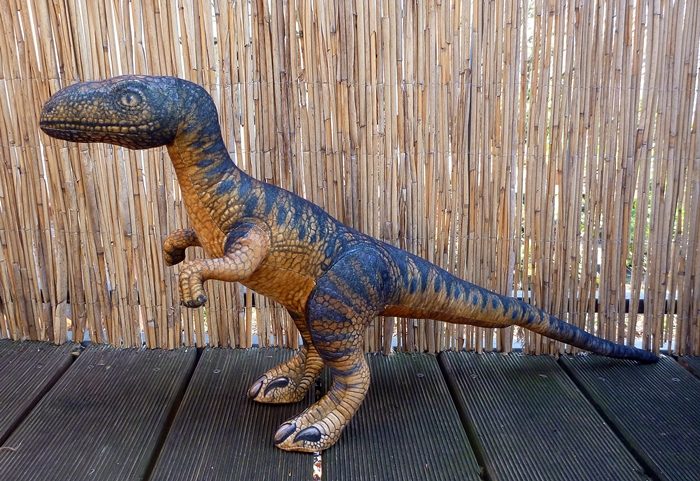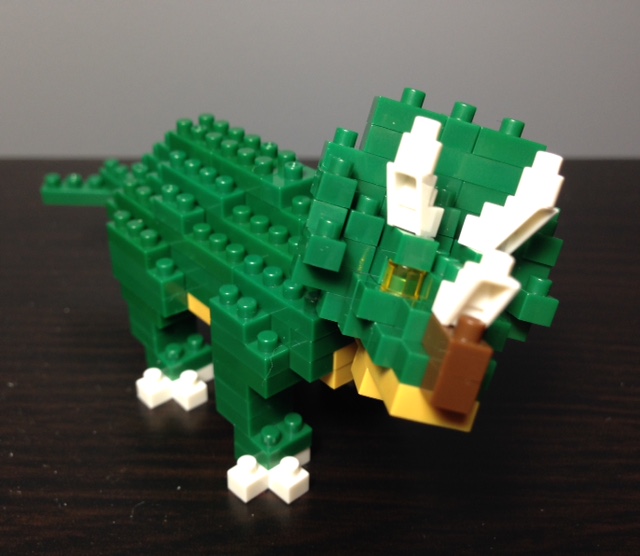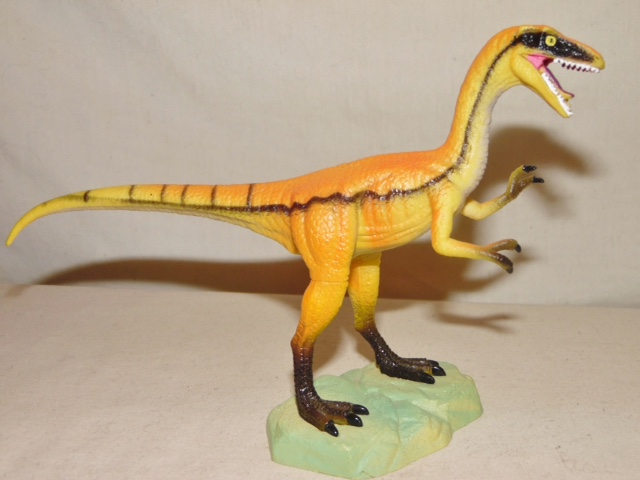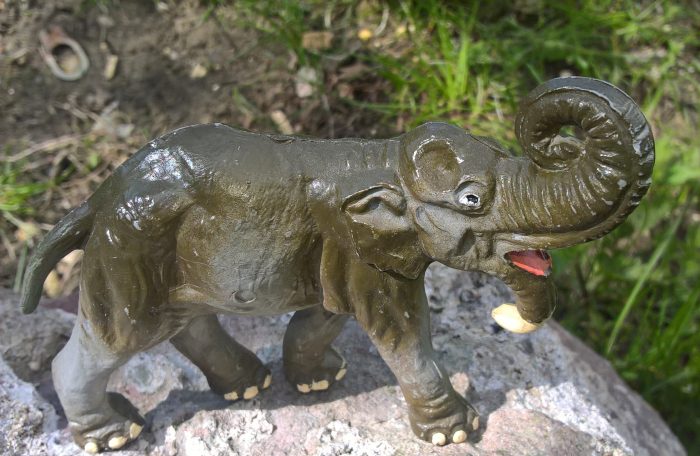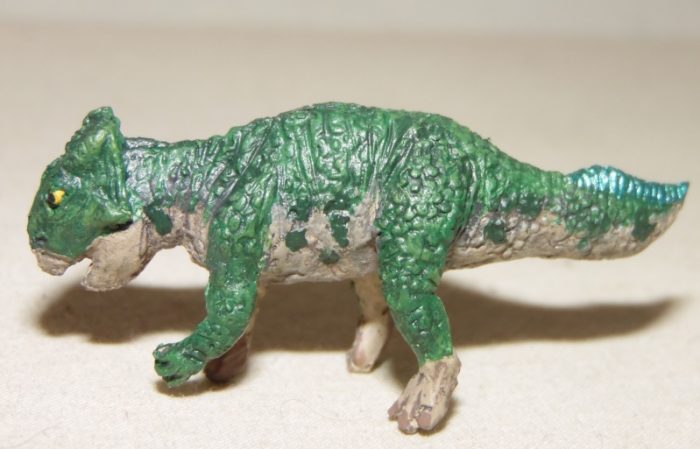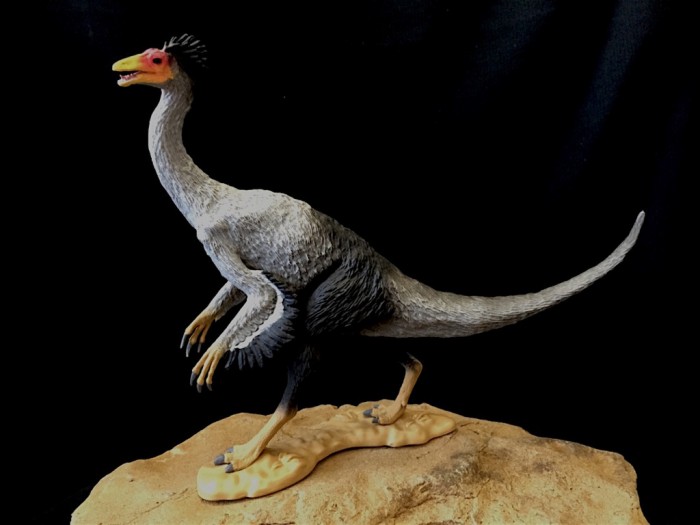Review and photos by Lanthanotus, edited by Suspsy
Back in the pre-JP era, TV documentaries about dinosaurs were a rare sight on German TV. As a dinophile, it was a viewing obligation when the public TV station aired a four part series about dinosaurs in 1991.
Review: Six little dinosaurs (Tyrannosaurus, Mamenchisaurus, Amargasaurus, Ankylosaurus, Spinosaurus, Triceratops) (PNSO)
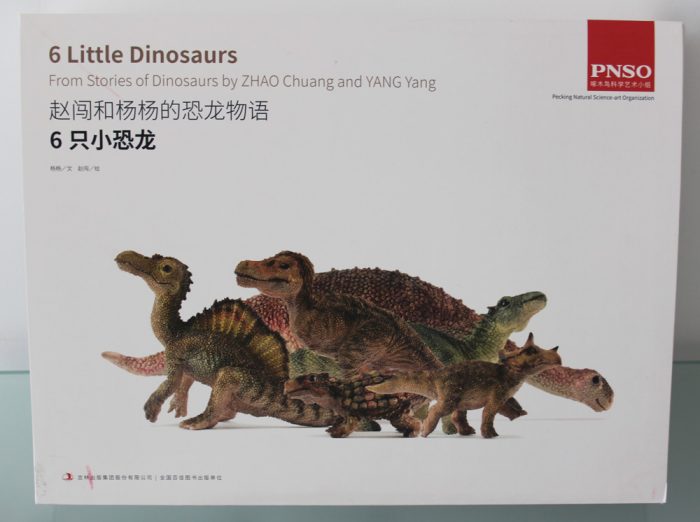
4 (18 votes)
Enter the PNSO! I first became aware of The Peking Natural Science-Art Organisation in March 2016, when I visited their offices and workshop in Beijing on a work-related business trip. It was with great excitement that I discovered this blossoming company has its sights set not only on literature and 2D palaeoart (my expectation going in), but also on commercially available 3D art as well: dinosaur toys.
Review: Encyclopedia of the Paleozoic (Kaiyodo Capsule Q Museum)

4.7 (12 votes)
Review and photos by Tim Sosa, edited by Suspsy
The interval of Earth’s history which shows fossil evidence of animals is known as the Phanerozoic Eon (literally “visible animals”). The Phanerozoic is divided into three Eras. We live in the Cenozoic, which was preceded by the Mesozoic (during which dinosaurs were the largest terrestrial animals).
The interval of Earth’s history which shows fossil evidence of animals is known as the Phanerozoic Eon (literally “visible animals”). The Phanerozoic is divided into three Eras. We live in the Cenozoic, which was preceded by the Mesozoic (during which dinosaurs were the largest terrestrial animals).
Review: Triceratops (Nanoblock)
Review: Anchitherium (Bullyland)
Review: Compsognathus (Jurassic Hunters by Geoworld)
Review: Deinotherium (Starlux)
Review: Parasaurolophus (Chap Mei)

3.5 (15 votes)
Ah, Parasaurolophus. By virtue of its distinctive tube-shaped crest, it has become the “default” hadrosaur, the one most frequently depicted in films, television, and toys. This particular piece of plastic we’ll be looking at comes courtesy of Chap Mei.
From the tip of its bill to the curve in its tail, this dinosaur measures 21.5 cm long.
Review: Leptoceratops (Protocasts)
Review: Miragaia (Zhong Jieming)
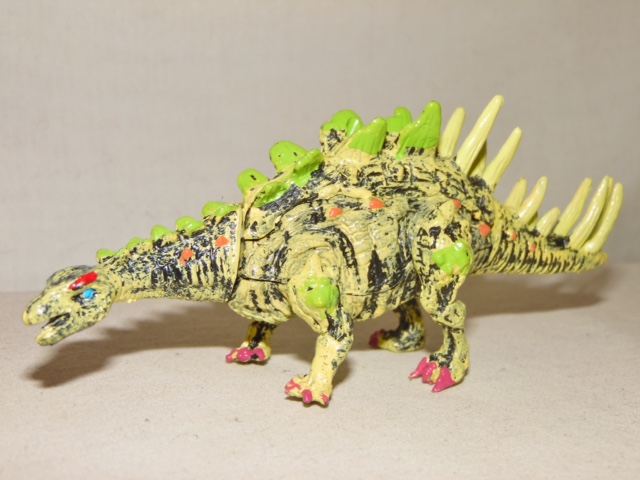
1.9 (9 votes)
Review and photos by Takama, edited by Suspsy
Ever wondered if knockoffs such as this Papo Spinosaurus and CollectA Hylaeosaurus have a company name behind them? Well, to save you the time, that company turns out to be Zhong Jieming. After reading that, you might be wondering why I brought up Chinese knockoff figures on our beloved blog, but in all seriousness, I found the source of those knockoffs completely by accident, and I have no intentions on purchasing any of them.
Ever wondered if knockoffs such as this Papo Spinosaurus and CollectA Hylaeosaurus have a company name behind them? Well, to save you the time, that company turns out to be Zhong Jieming. After reading that, you might be wondering why I brought up Chinese knockoff figures on our beloved blog, but in all seriousness, I found the source of those knockoffs completely by accident, and I have no intentions on purchasing any of them.
Review: Beishanlong (Deluxe by CollectA)
Review: Megatherium (Prehistoric Mammals by Schleich)
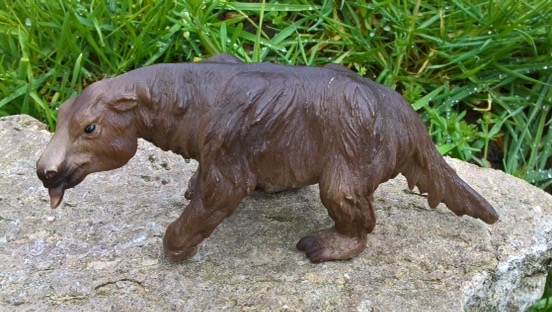
4.4 (8 votes)
Review and photographs by Indohyus, edited by Suspsy
In many ways, the giant ground sloths are similar to prosauropods in that they are a familiar group, but only one member gets love in toy form. The other group of giant xenarthrans, the glyptodonts, tend get at least get two representatives, but only Megatherium gets a toy form among giant ground sloths.
In many ways, the giant ground sloths are similar to prosauropods in that they are a familiar group, but only one member gets love in toy form. The other group of giant xenarthrans, the glyptodonts, tend get at least get two representatives, but only Megatherium gets a toy form among giant ground sloths.

